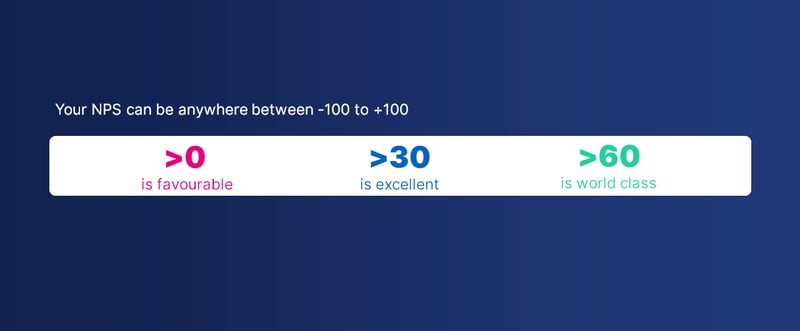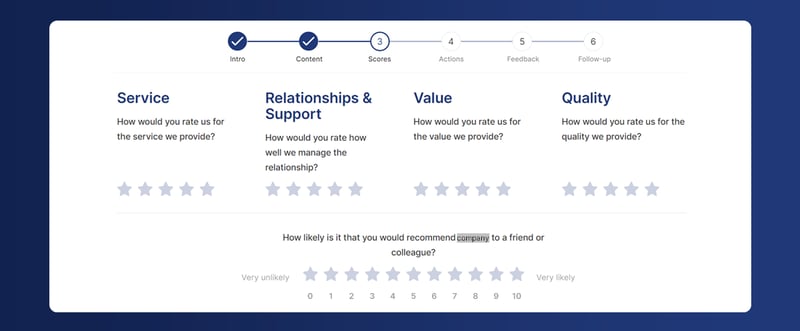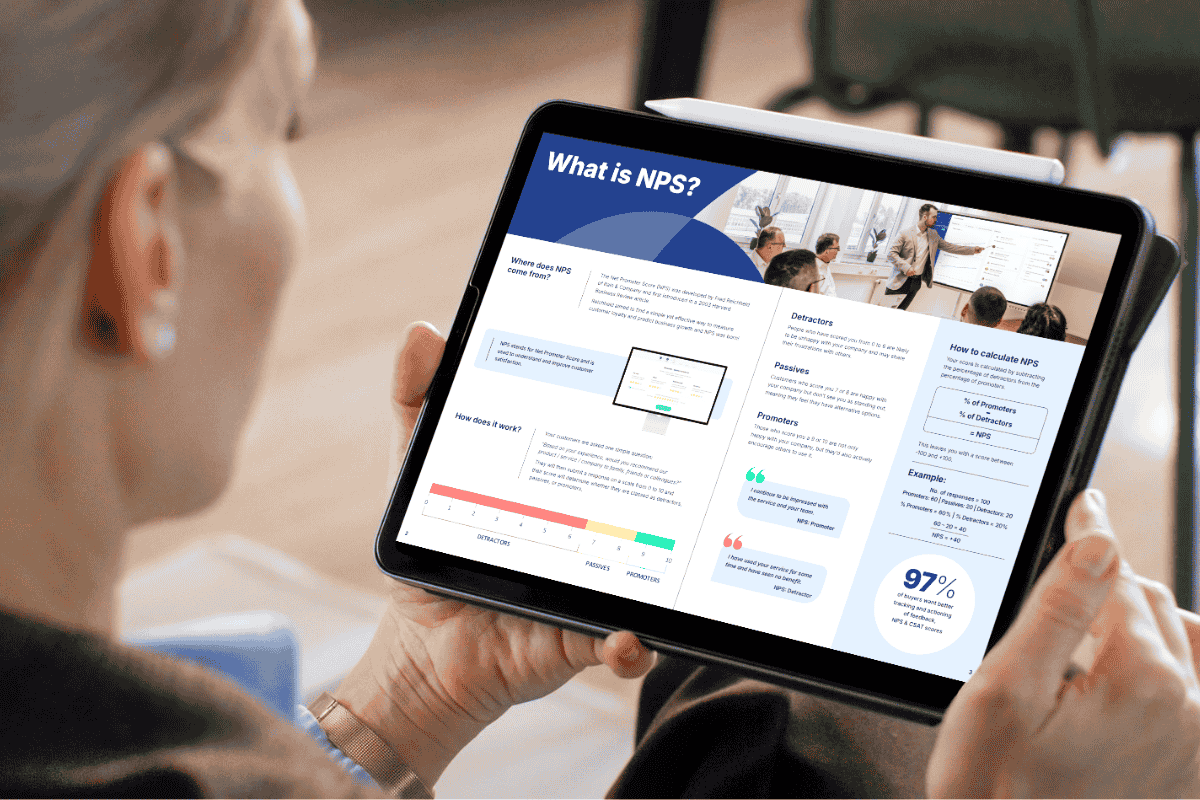
Your most powerful metric as a business is your Net Promoter Score, or NPS. If you combine NPS with your Quarterly Business Reviews (QBRs) and CSAT it can be used not just as a one-off indicator, but as part of your on-going strategy to build outstanding client relationships.
A Net Promoter Score is a way of measuring how many of your current clients would be an advocate for your service.
What is NPS?
NPS is measured by asking your clients to rate you out of 10 based on the question:
“On a scale of 0 to 10, how likely are you to recommend us to a friend or colleague?”
Using one very simple question, you can unlock insight into your business and turn your clients into advocates and promoters of your business.

Anyone who scores you between 0 and 6, is a Detractor. Detractors are not going to encourage others to use your service, and in some cases, may actively discourage others from using it.
Someone who scores you a 7 or an 8, is a Passive. Passives are satisfied with their experience, but are unlikely to encourage others to use your service.
A person who scores you a 9 or a 10 is a Promoter. Promoters love your service and are highly likely to share their experience with others and encourage them to use your service.
How do you calculate NPS?
Your score is worked out by subtracting your Detractor score from your Promoter score. This leaves you with an overall score between –100 to +100.

What is considered a good NPS?
Each industry has a different range of what is considered a good score. You should always aim to exceed your industry’s average. A good rule of thumb is to aim to have more Promotors than Detractors, therefore a value higher than 0.

What makes NPS so powerful?
The power of NPS lies in its simplicity. Finding out who is a promoter, who is passive and who is a detractor enables you to act. And act quickly.
- Detractors need to be spoken to. Understand why the feel that way and work to get them back on side.
- Promoters should be embraced. They can give you case studies and open doors to new sales and contacts outside your relationship.
- Passives need care. If you can move a client from passive to promoter you’ve gone a long way to securing a renewal.
Above all else, don’t sit on the data. Use it effectively to help you retain and grow your contract.
Also, remember that if your clients have engaged with your NPS request, it is typically a demonstration that they are invested and that they care. If your clients aren’t engaging with your requests, consider why that might be the case. Where are the patterns? Sometimes, getting no score is worse than a low score so use platforms such as Pulse to keep an eye out on who is not scoring you.
Equally, you will gain insight from the patterns in which clients have scored you high and which clients have not. Are all the clients scoring you highly from one industry, and those scoring you lower in another industry? Have there been changes to their contract? How large is the contract? These are all ways you can begin to identify patterns in your NPS responses. From these patterns you may be able to identify the successes and any problems before you have even spoken to them!

What should I do with my NPS results?
First and foremost, communicate with your clients. Whether they are Promoters, Passives or Detractors, their perspective is valuable to your organisation. A Passive has the potential to be a future Promoter, or Detractor, depending on whether you take the time to engage with their perspective.
Your clients want to be heard and you need to hear them.
Take the time to actively look for the patterns in your data. You might be surprised by what you find. Has there been an overall spike in the response rates from particular industries? Or dips from others? Maybe there is a link between the size of the contracts you have with those clients.
Depending on the NPS score, you may want to have their account manager reach out, or a member of senior management. Your clients will get the chance to see that the NPS they filled out isn’t just a courtesy, but a demonstration of how much you care about them and the service you provide.
What next?
Seeing the power of the NPS, we made it an obligatory feature in any Quarterly Business Reviews (QBRs) sent using our Pulse tool. We make sure our customers have not only a consistent way of measuring their NPS over time but ensuring better than average response rates compared to stand-alone NPS software.
Learn more about how our unique Quarterly Business Reviews platform works and what our customers have to say about us. Interested in seeing what digitising your QBR process and combining it with NPS and CSAT could help your business? Check out our ROI calculator or book a demo with our team.
Want to know more? Take a tour of Pulse or book a demo today!

